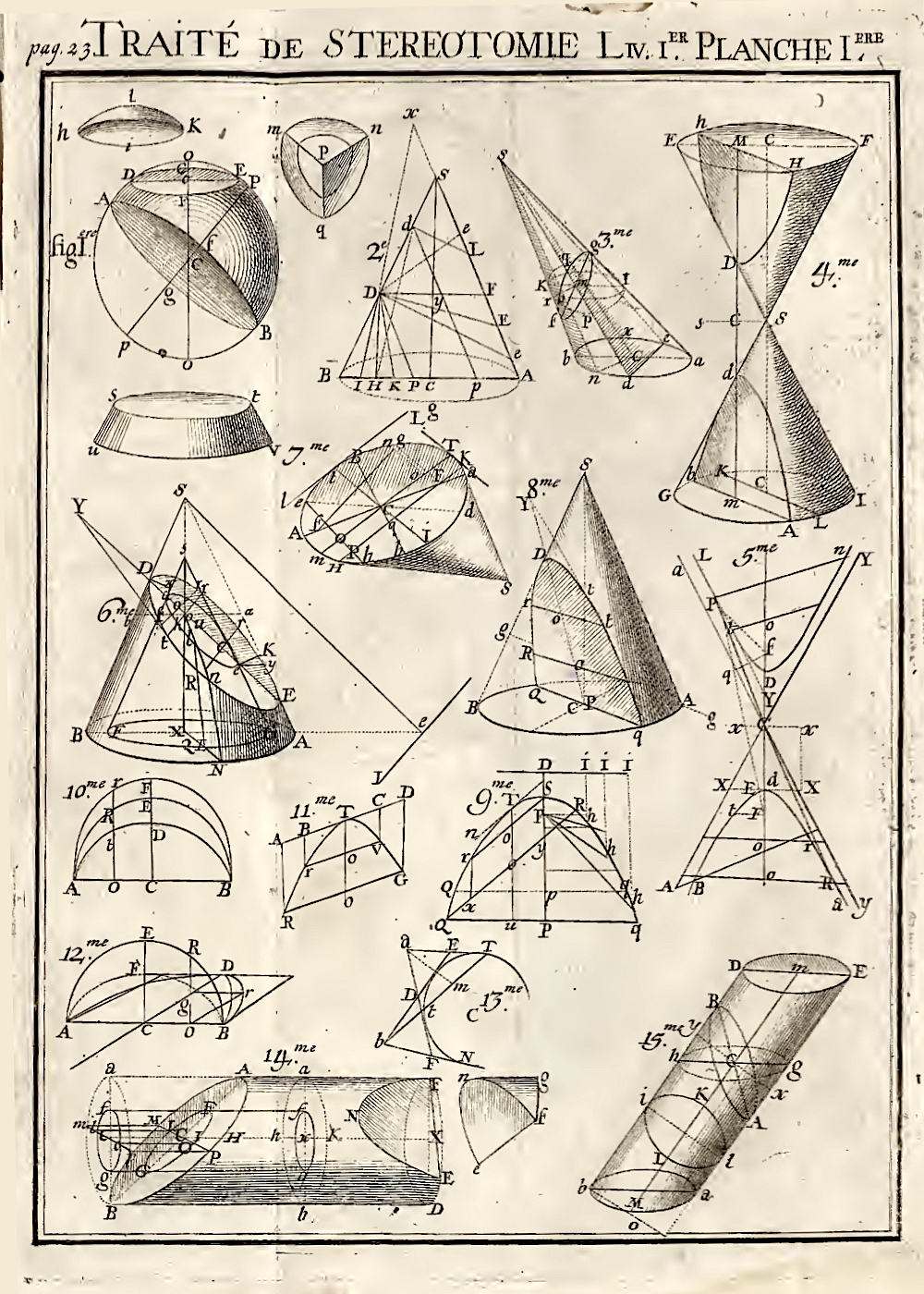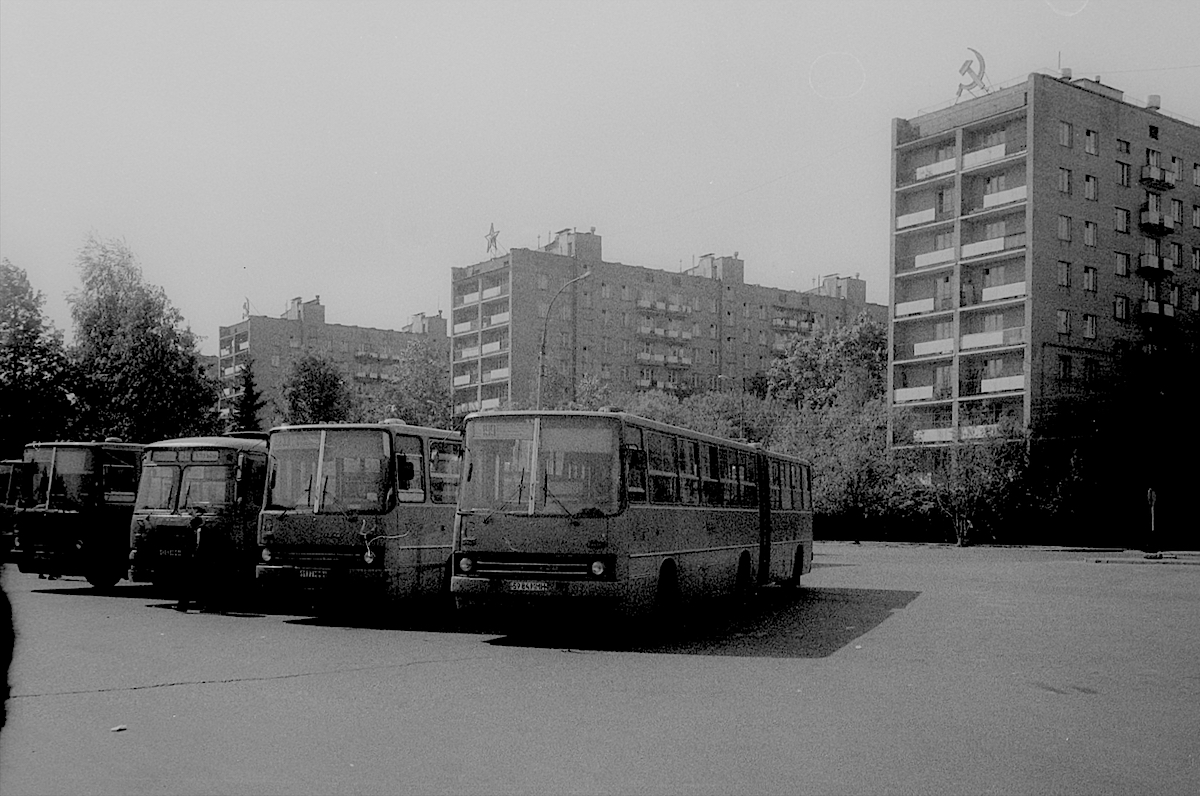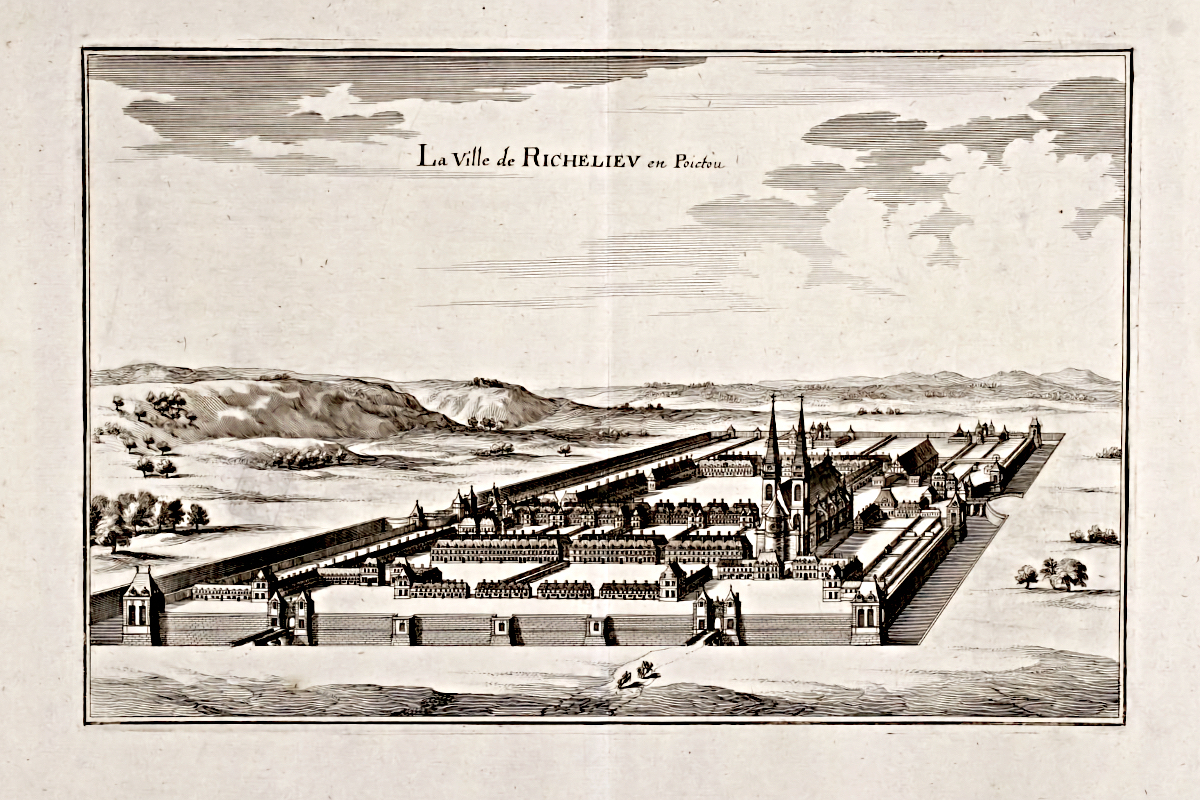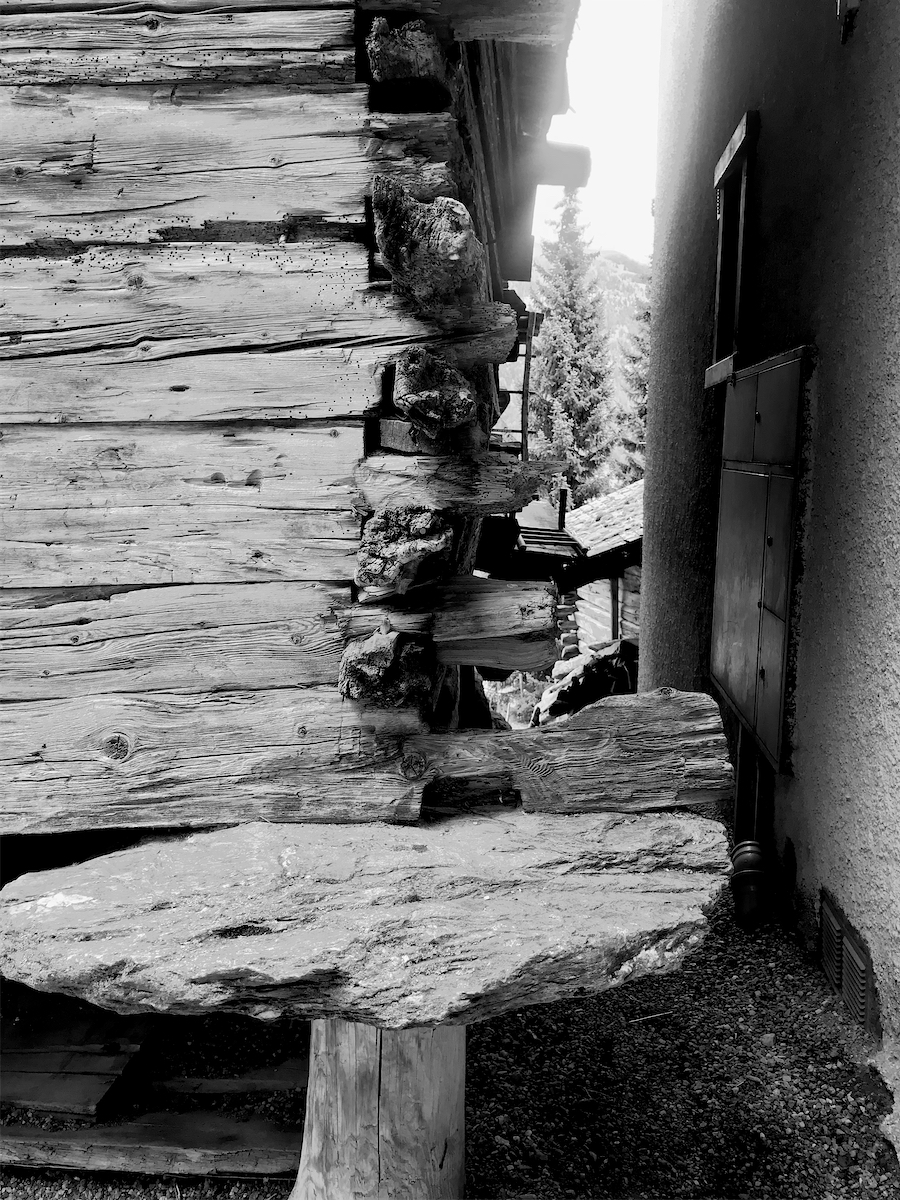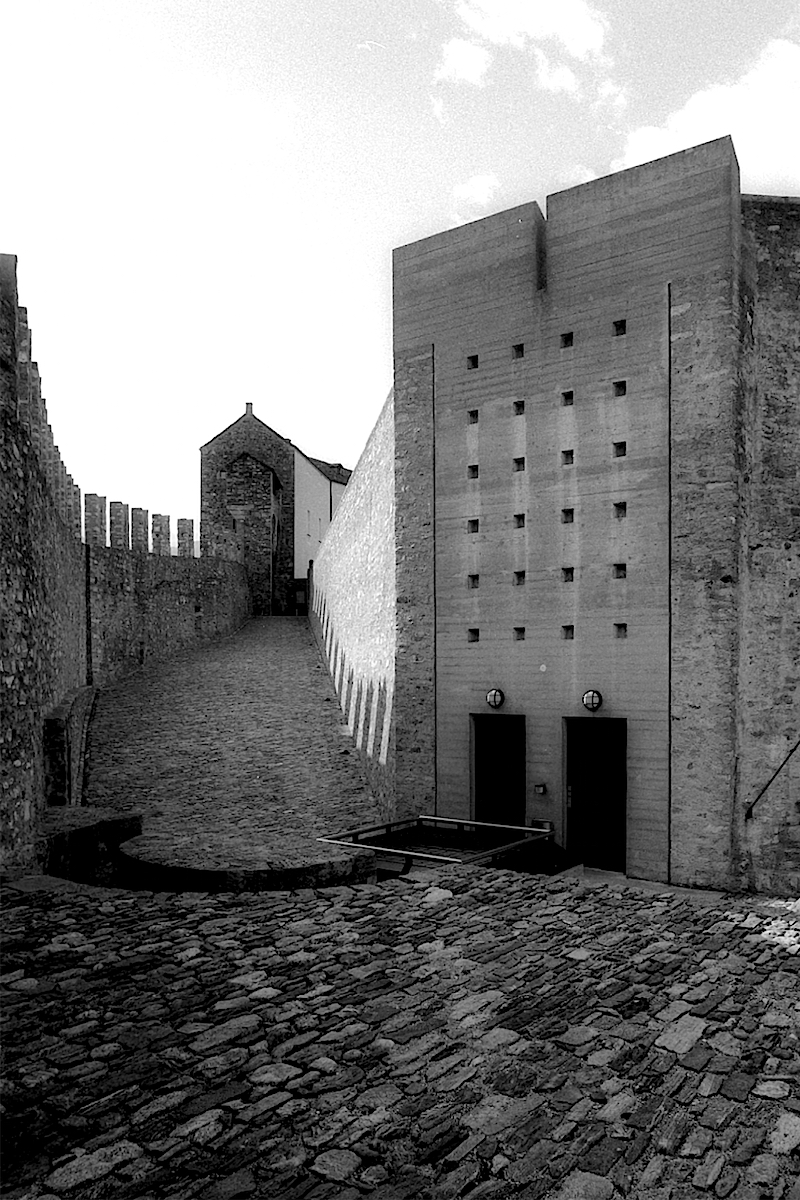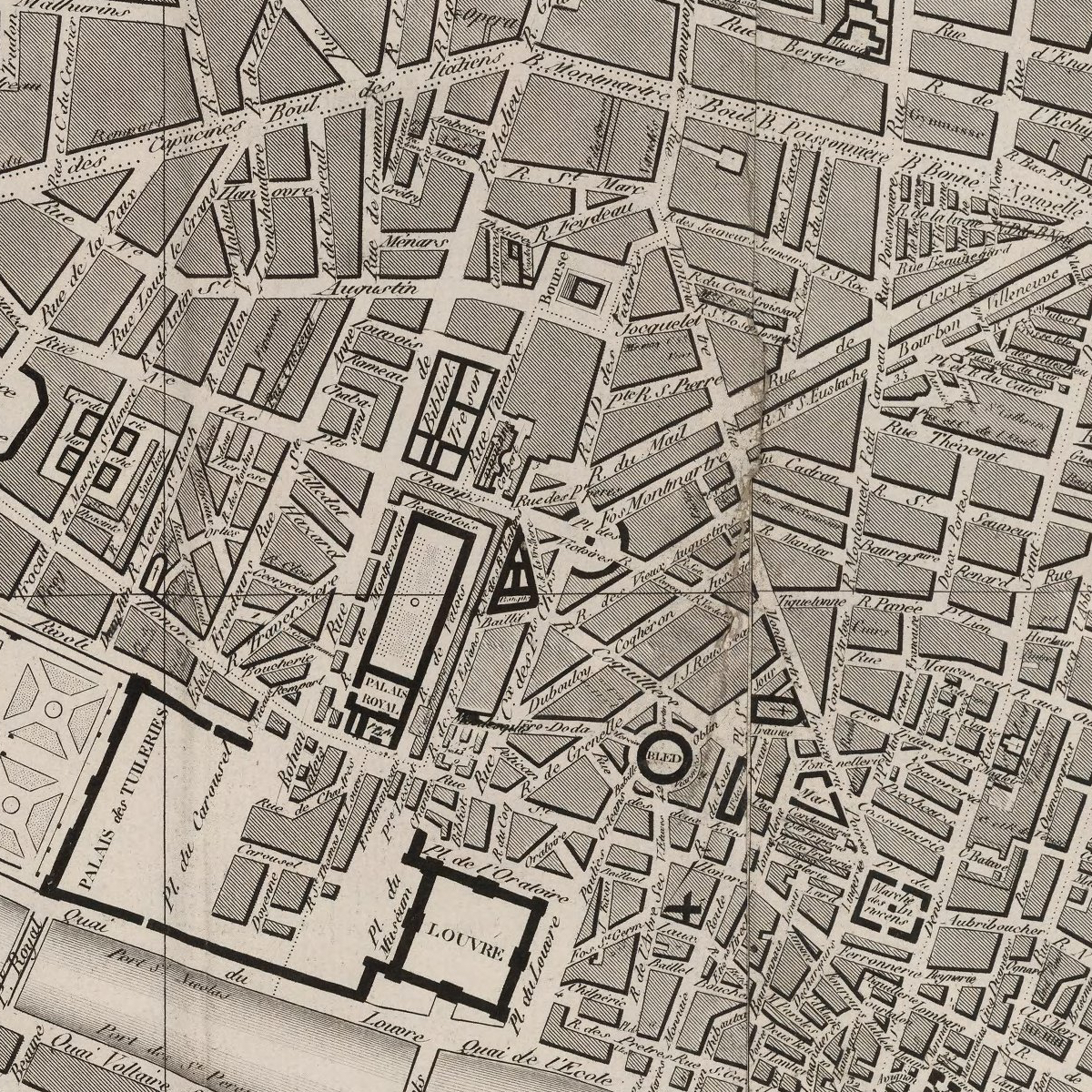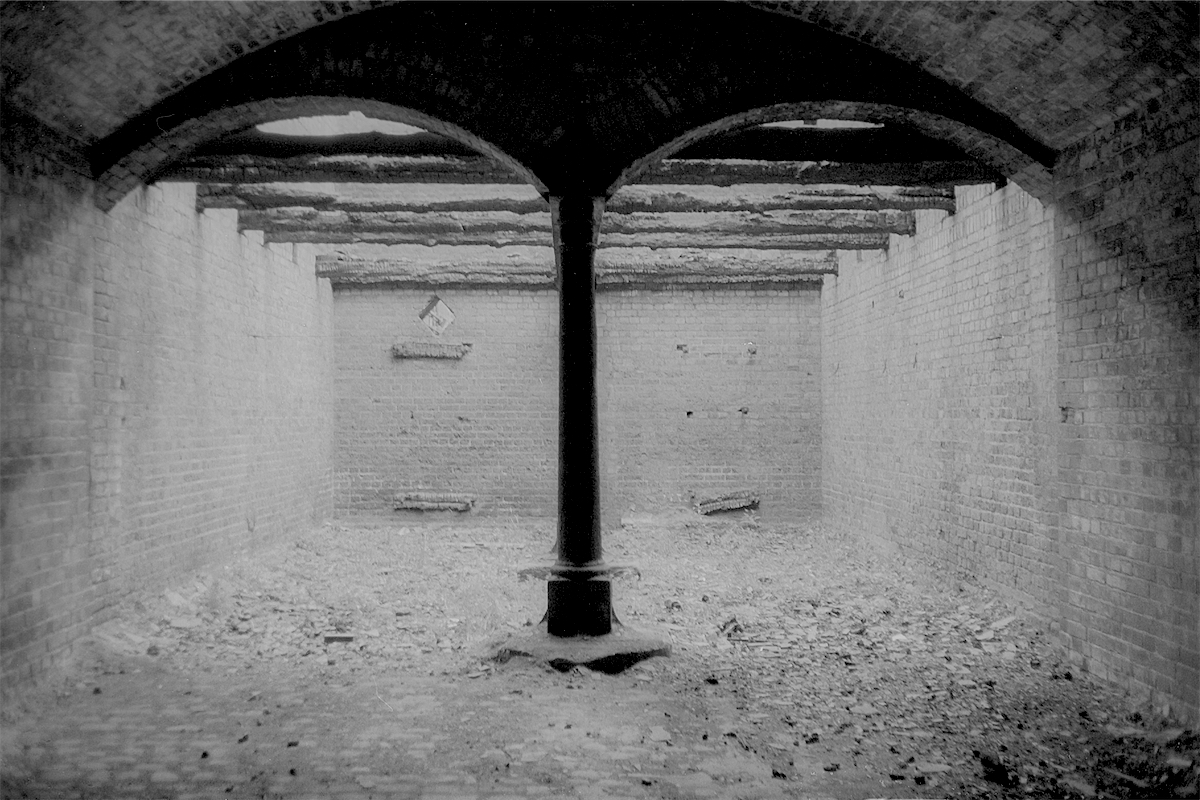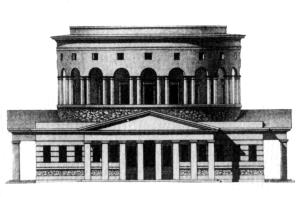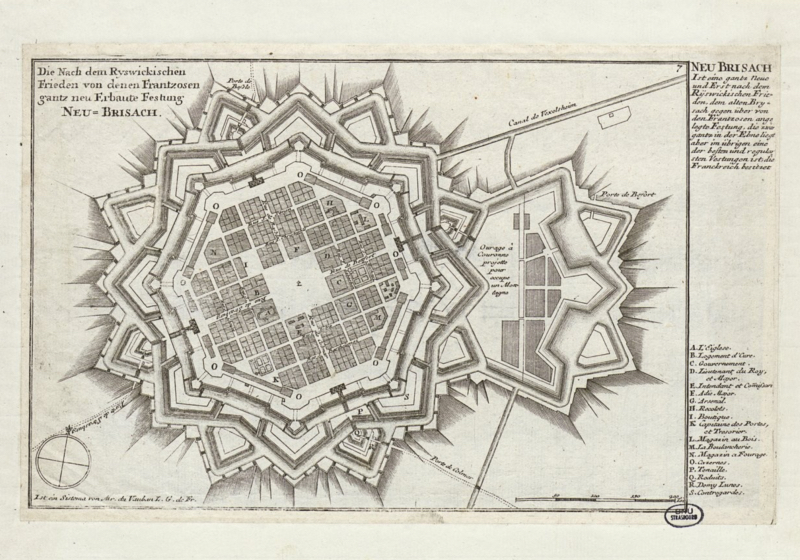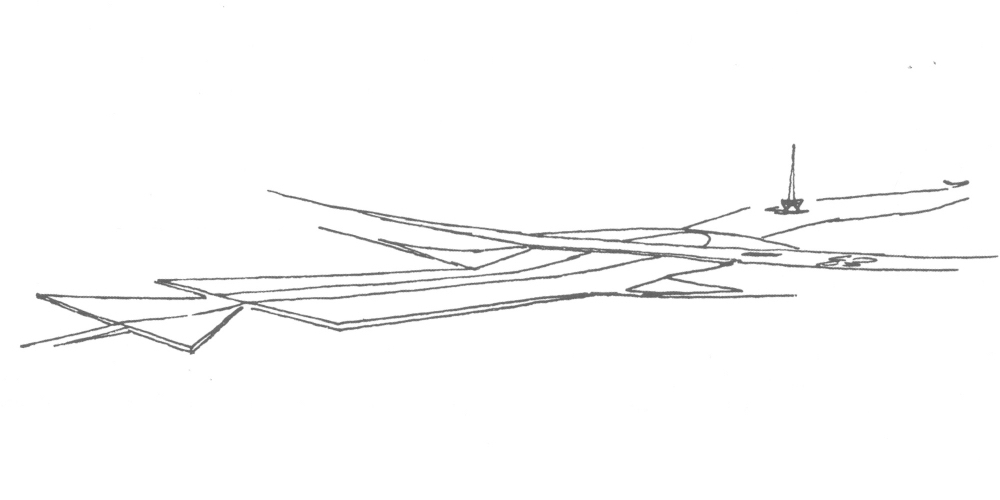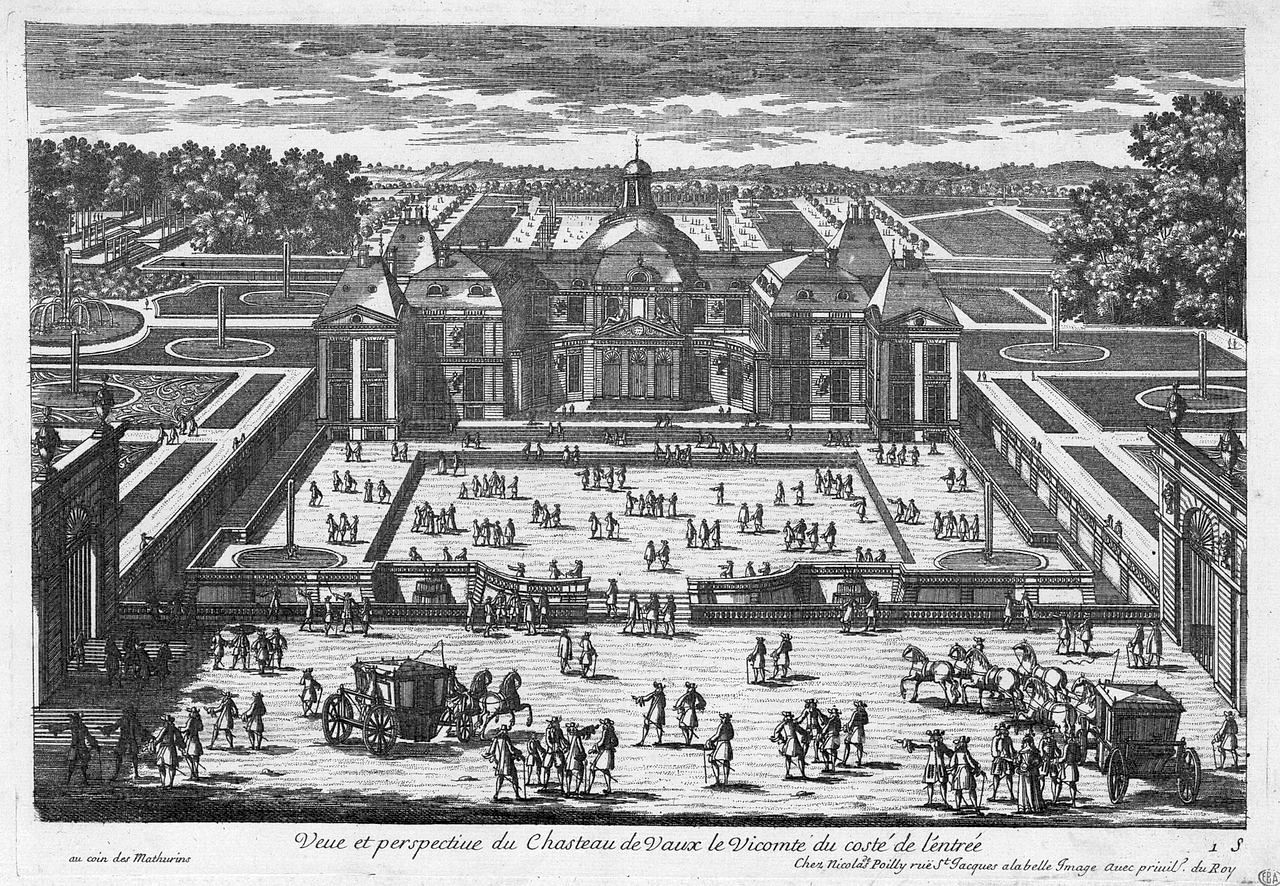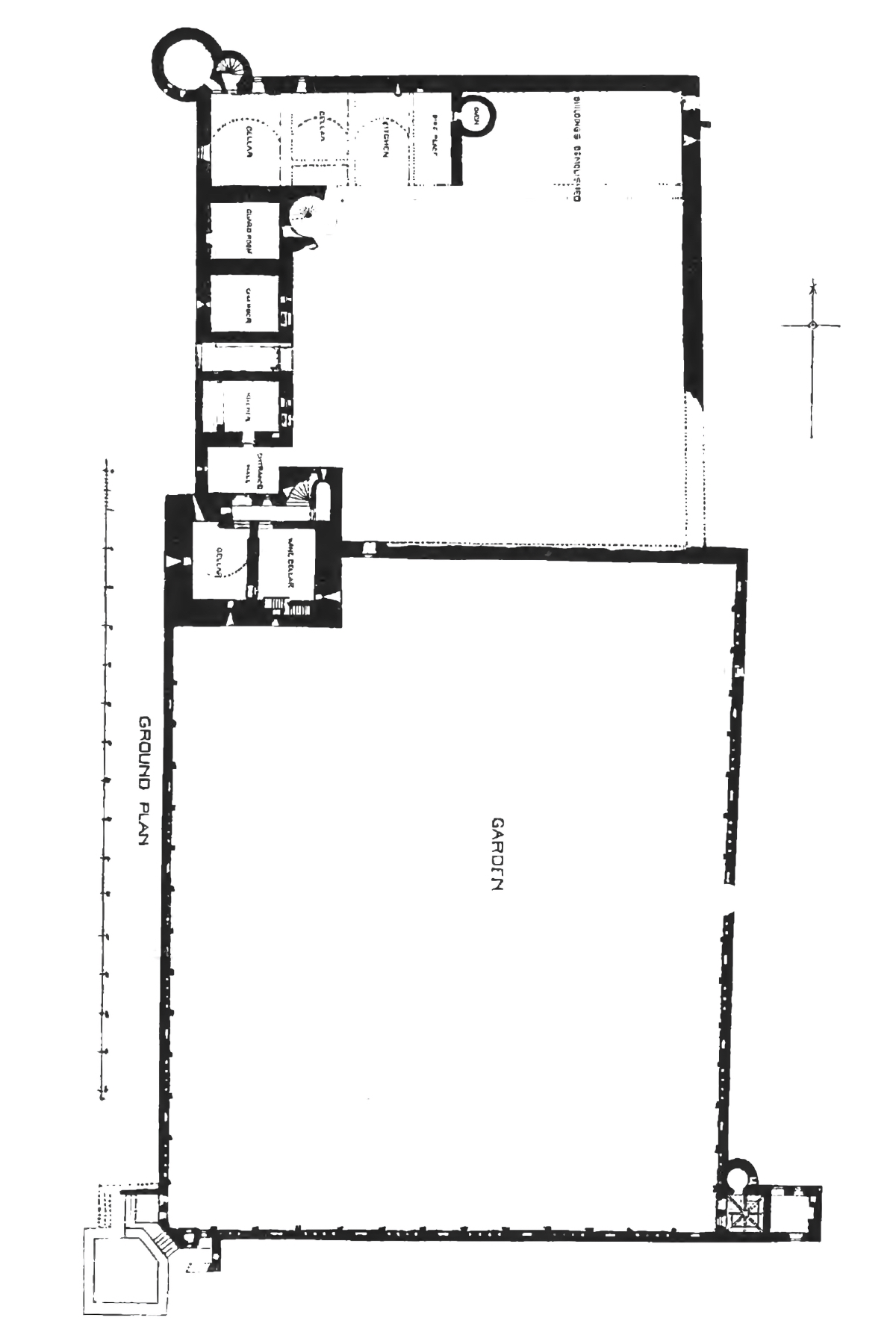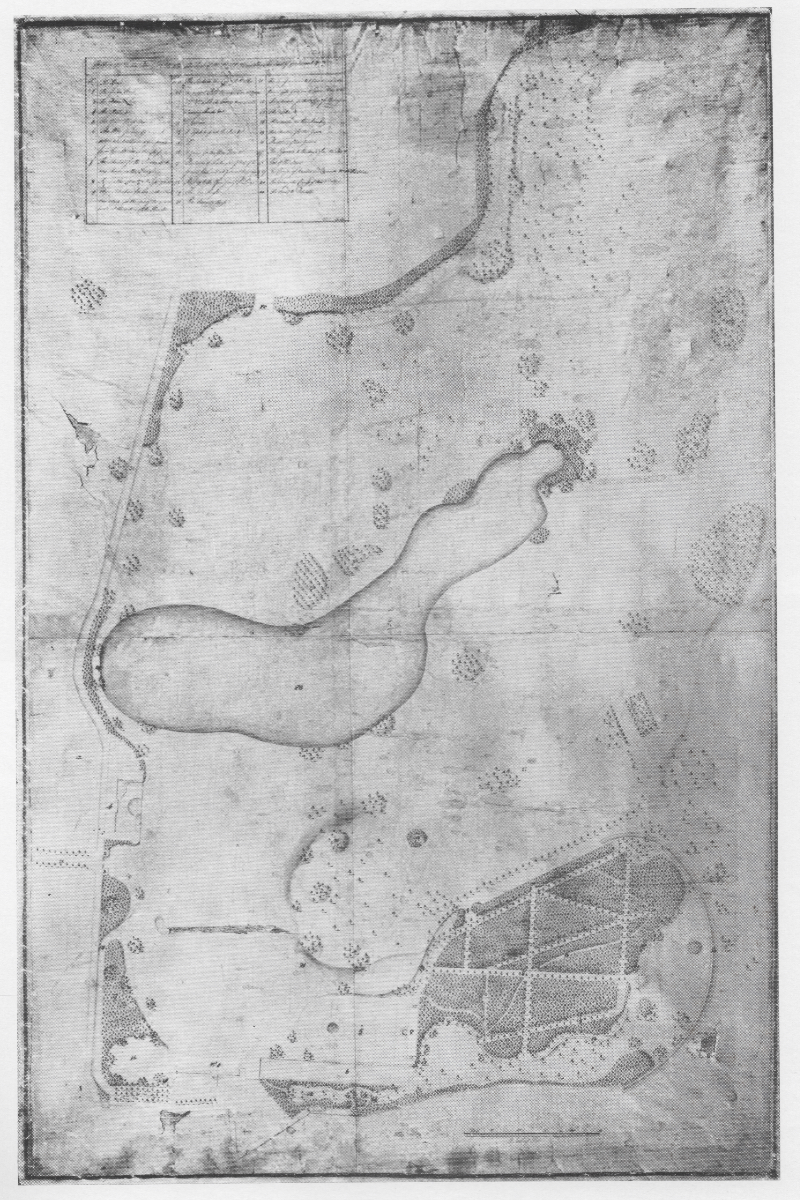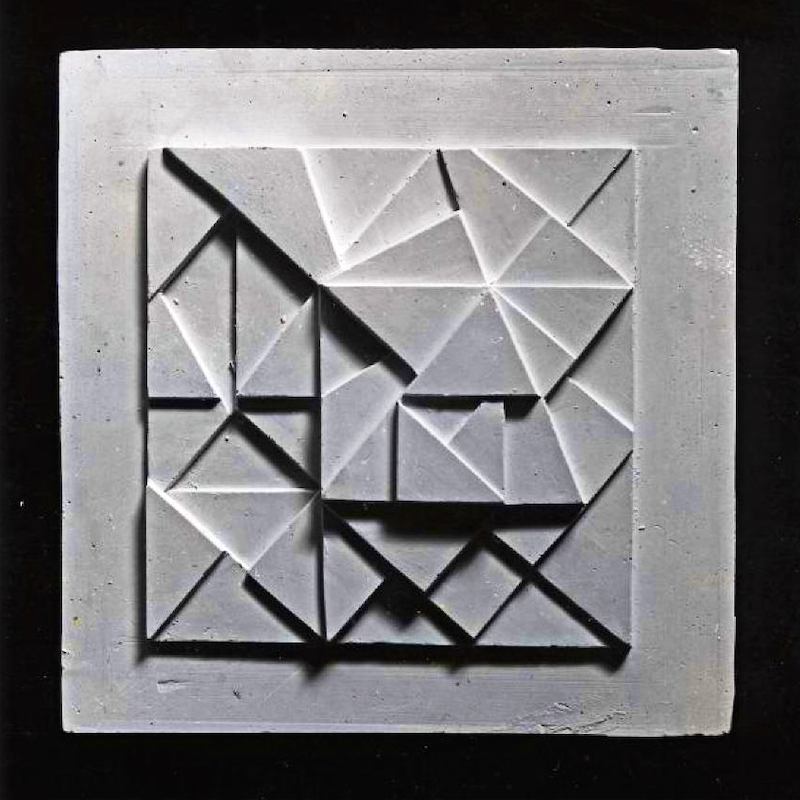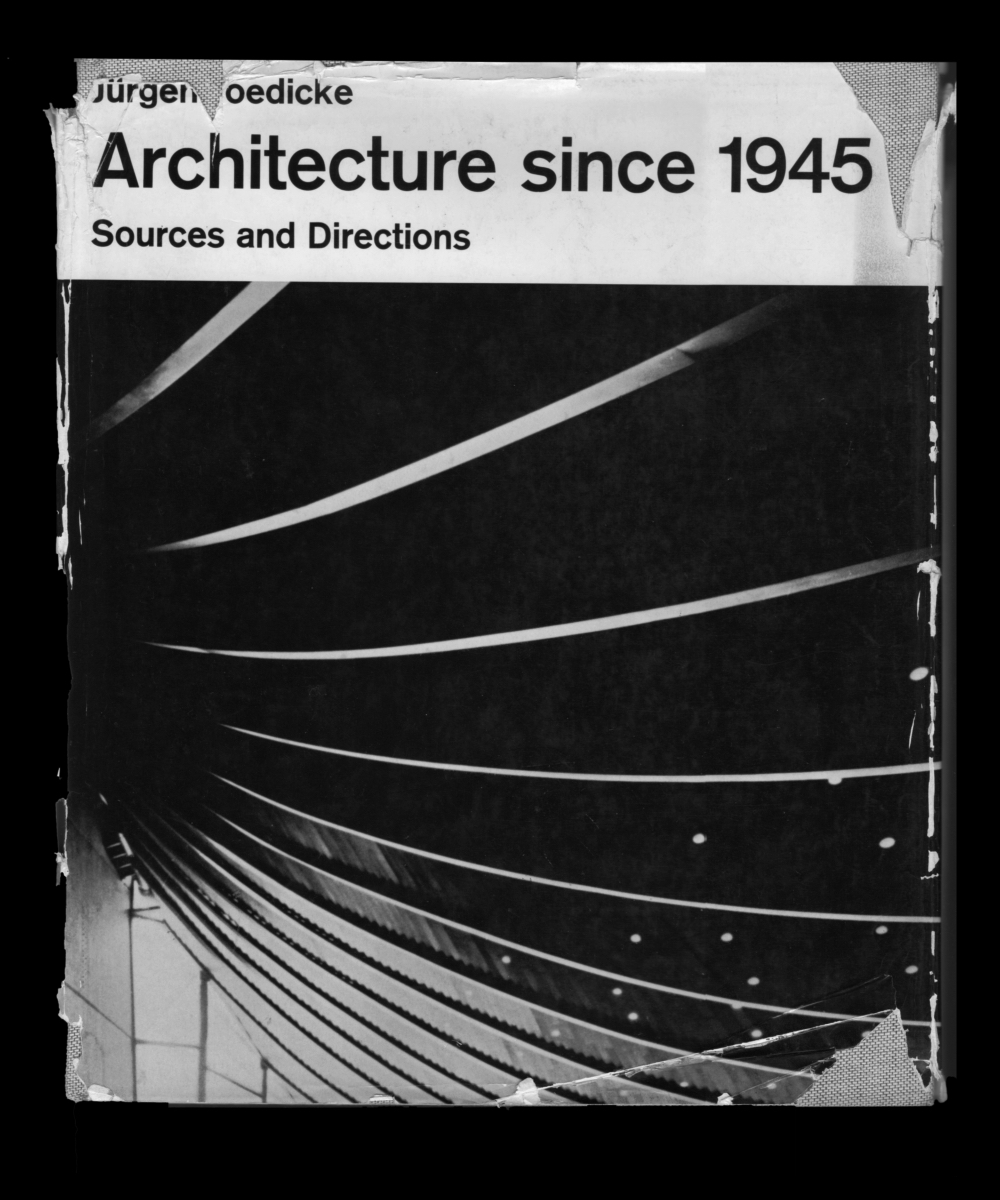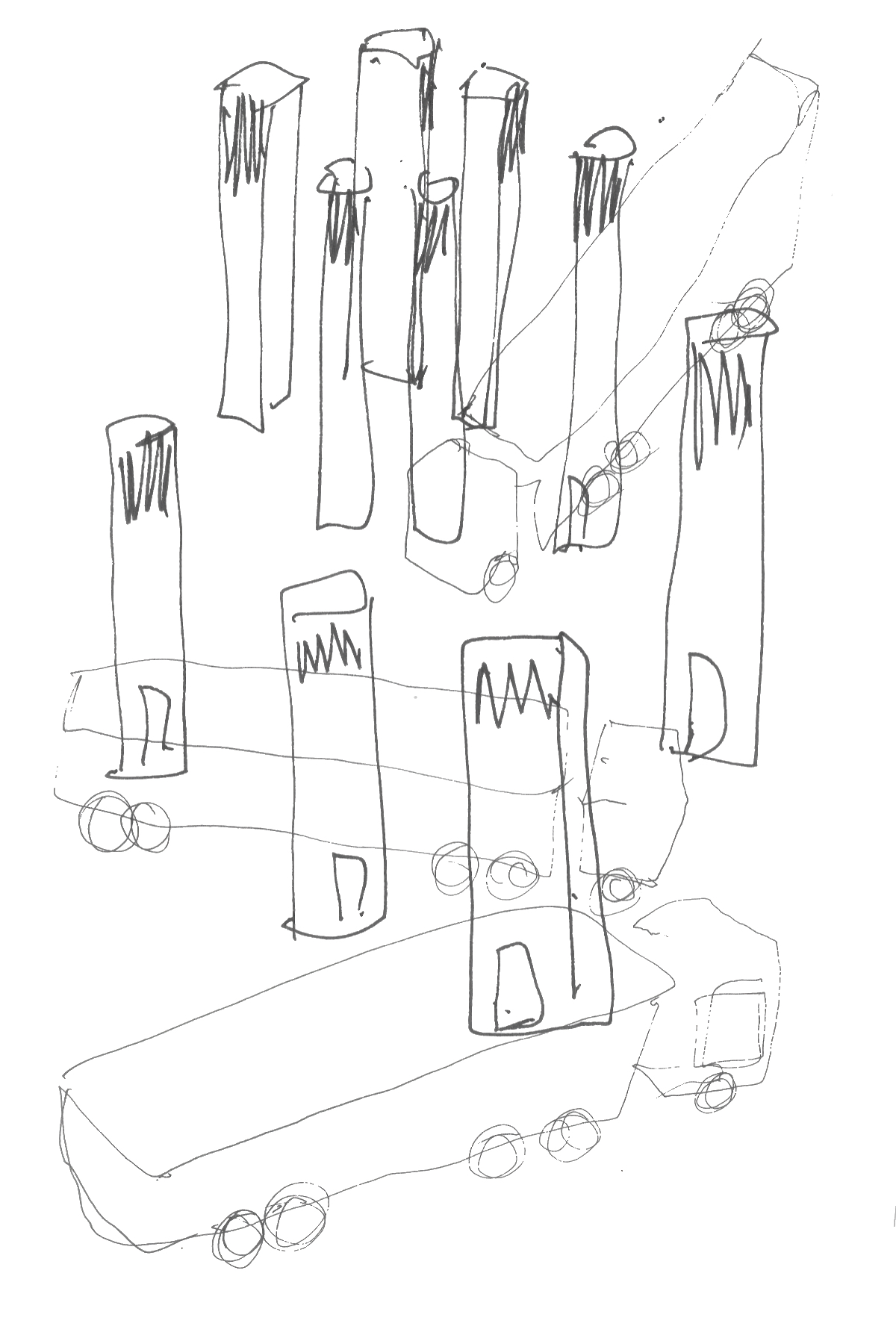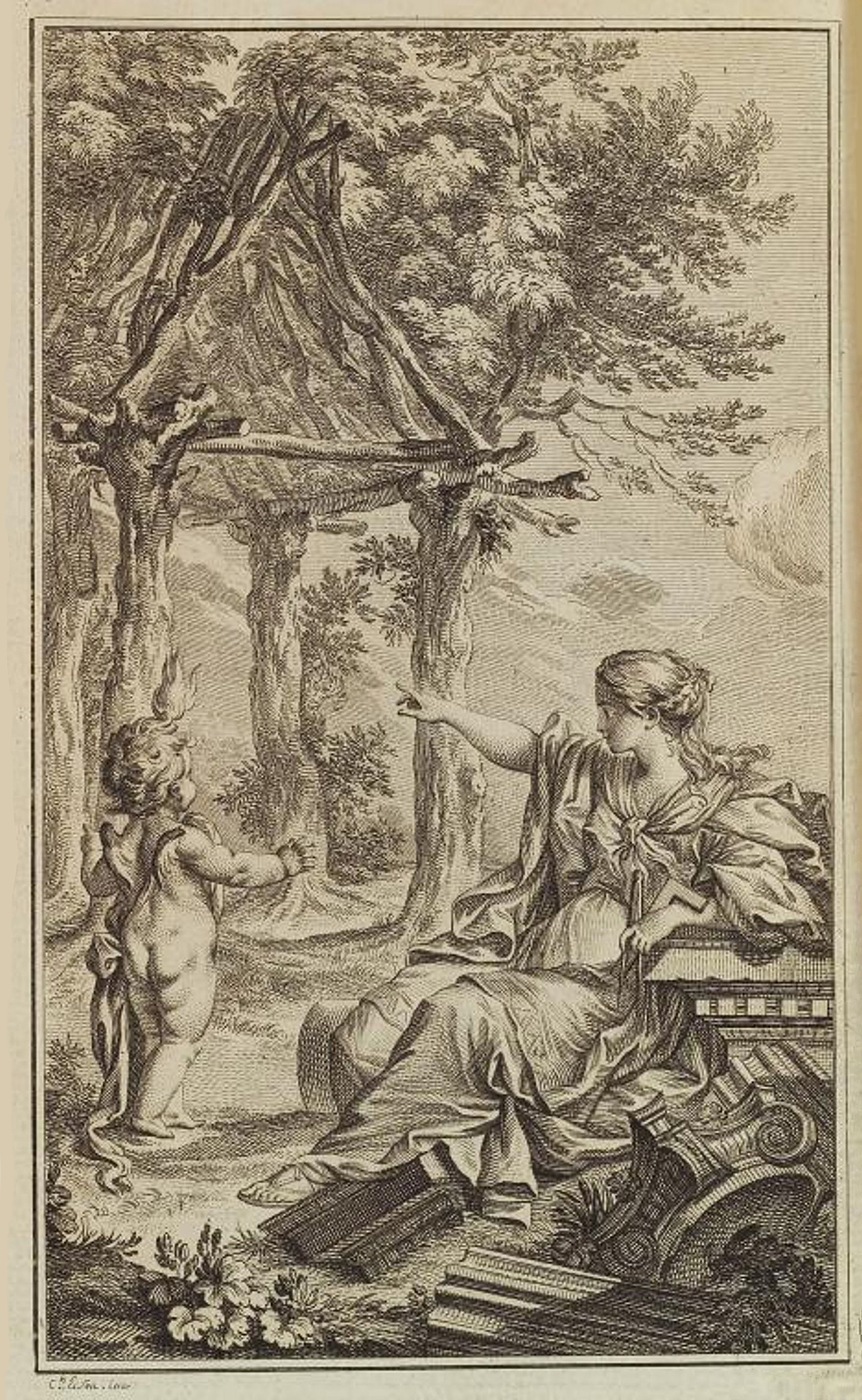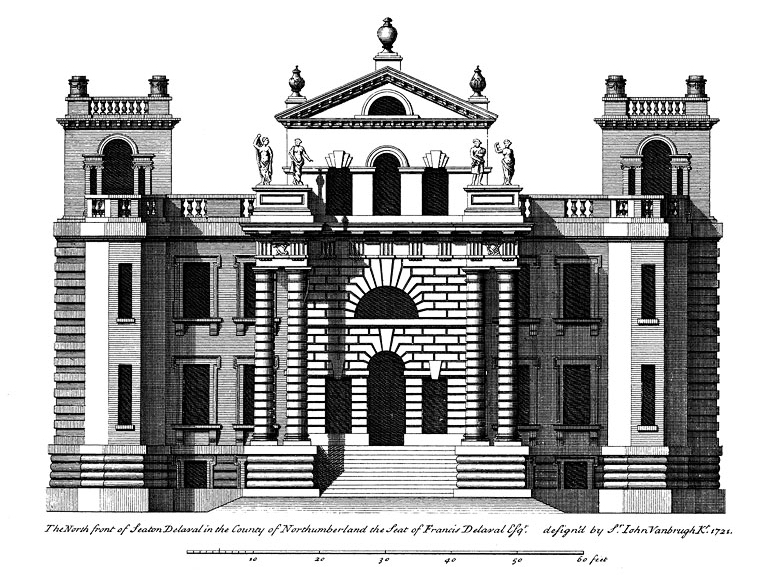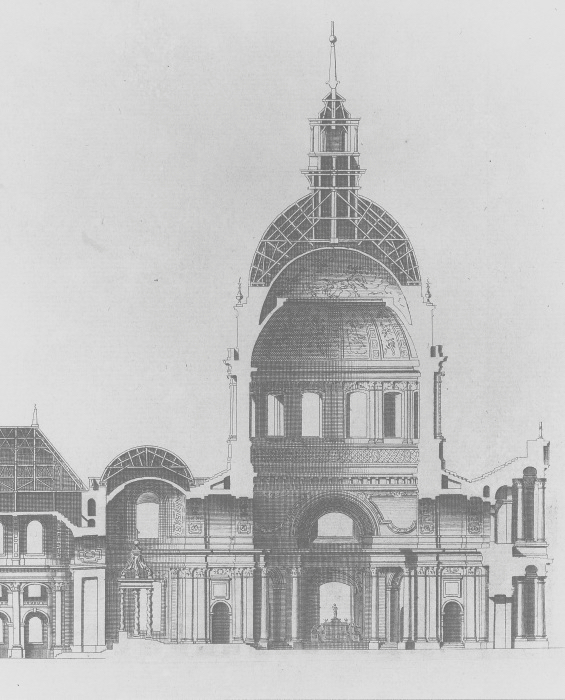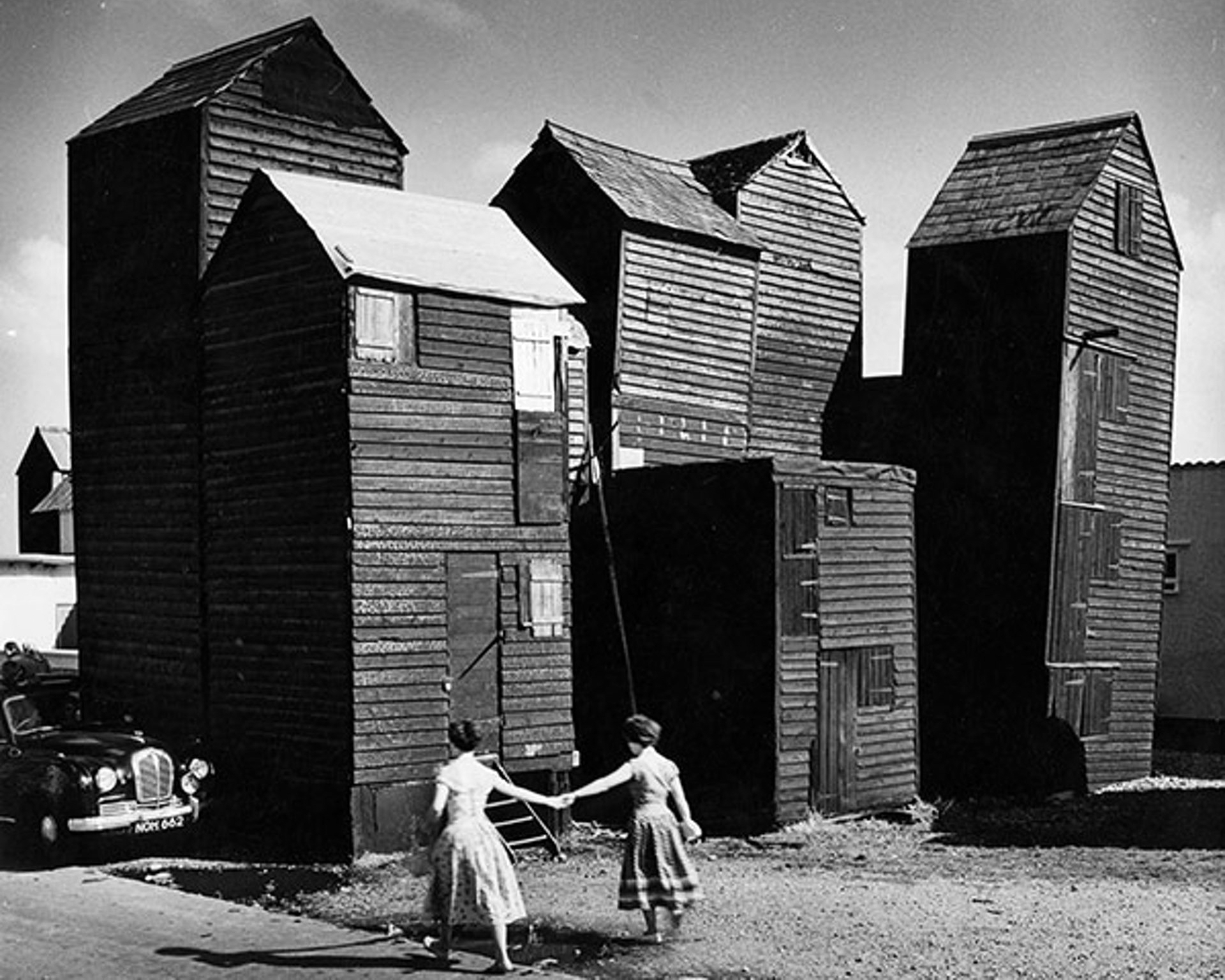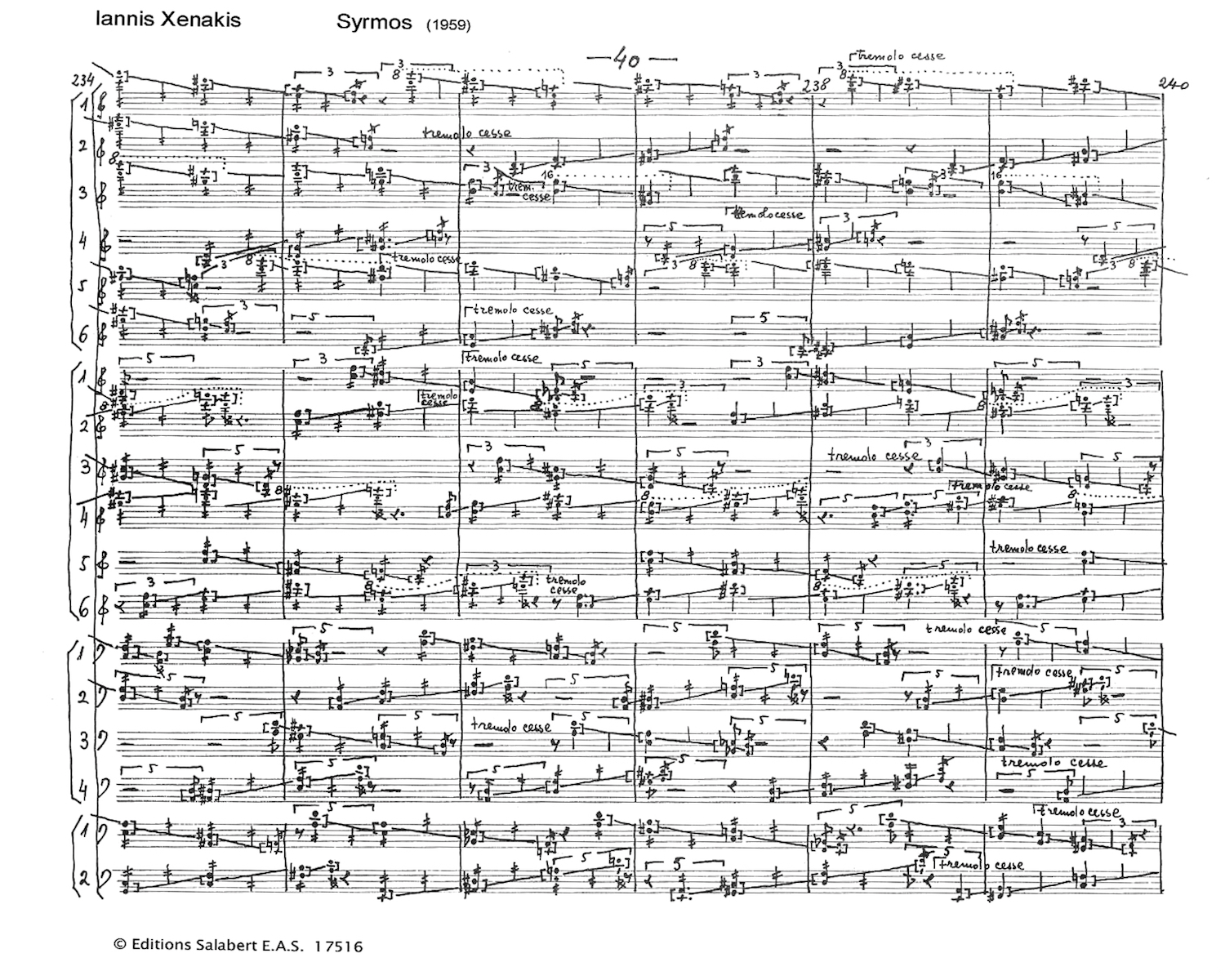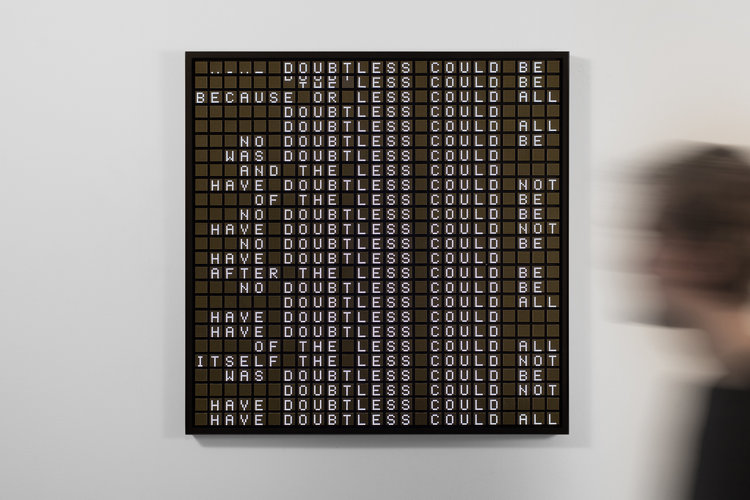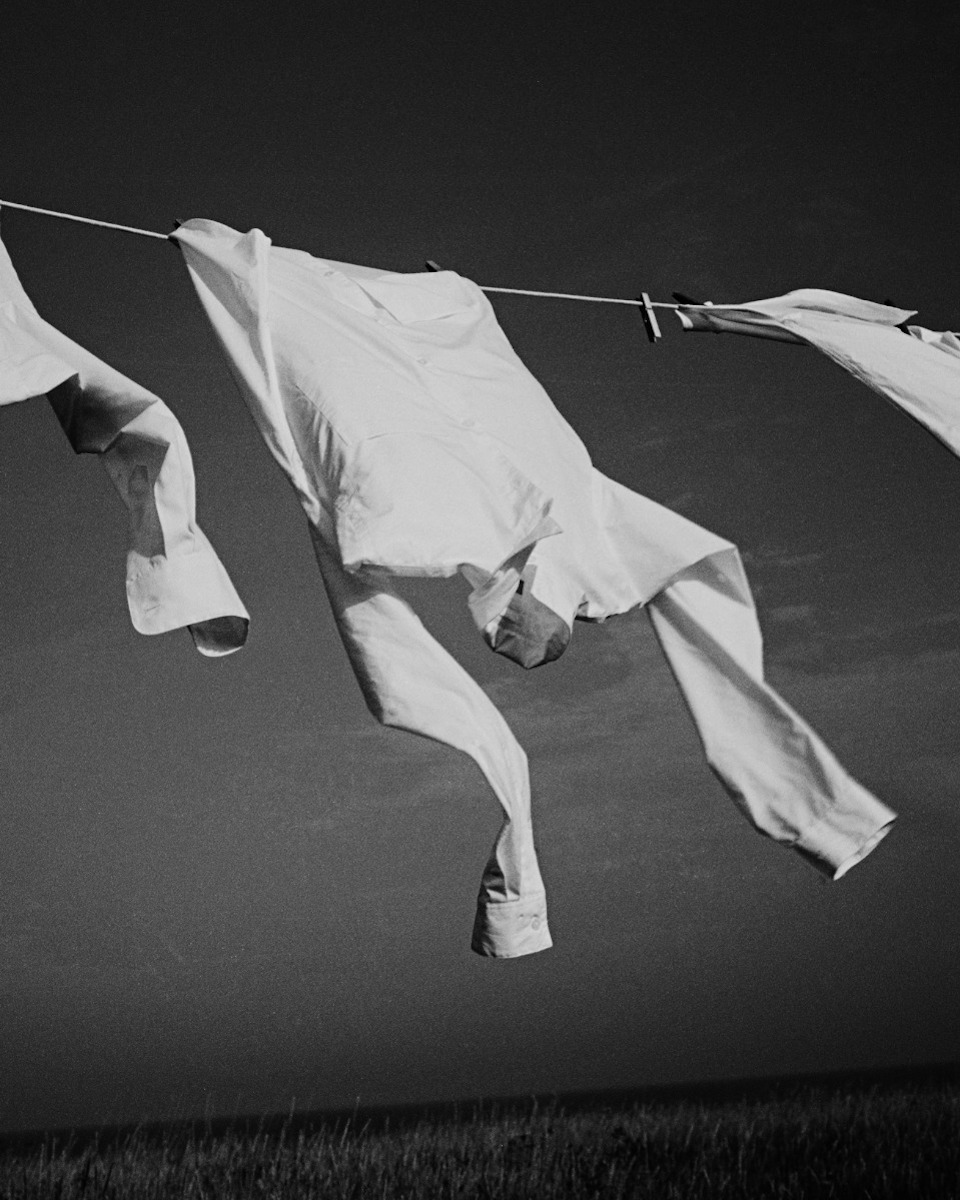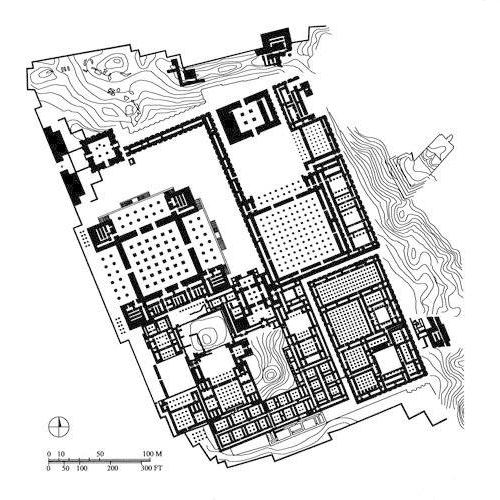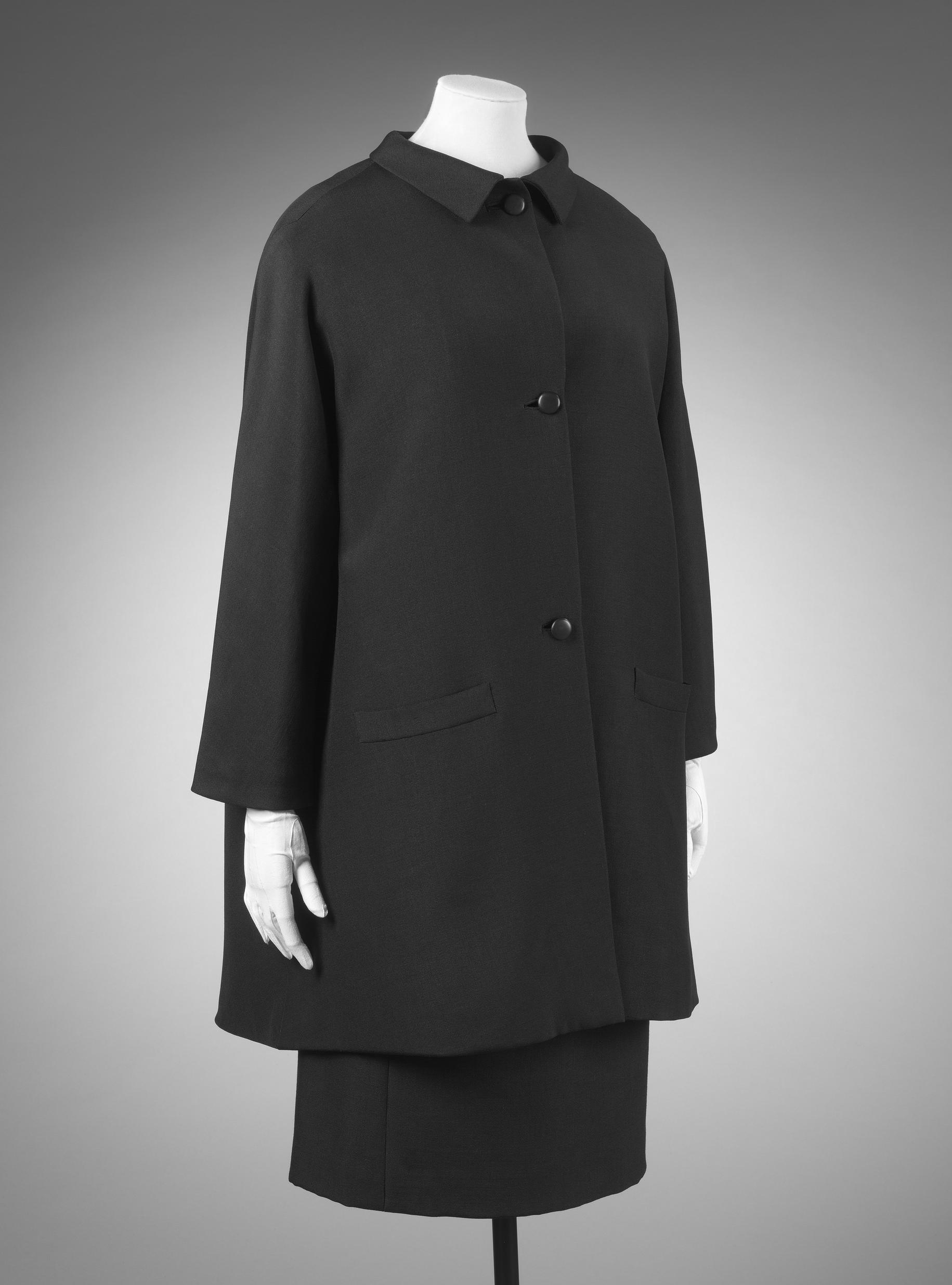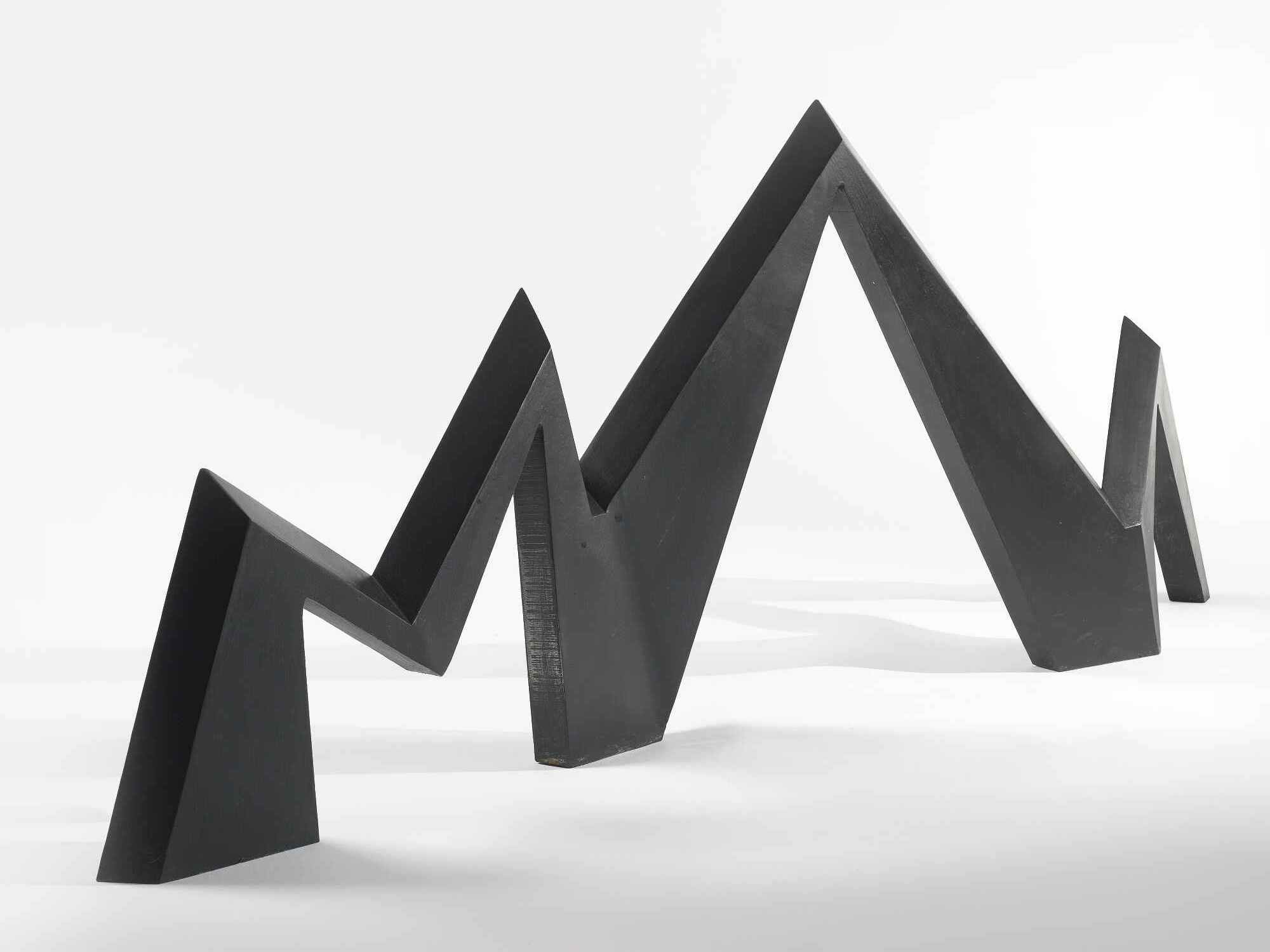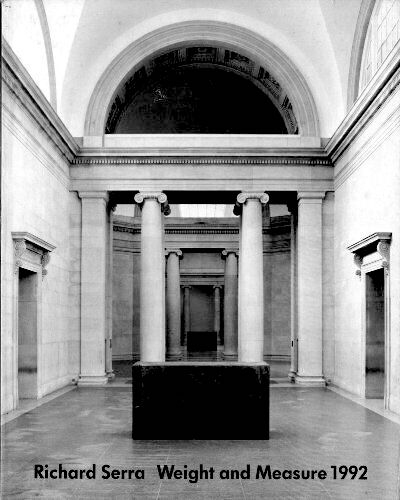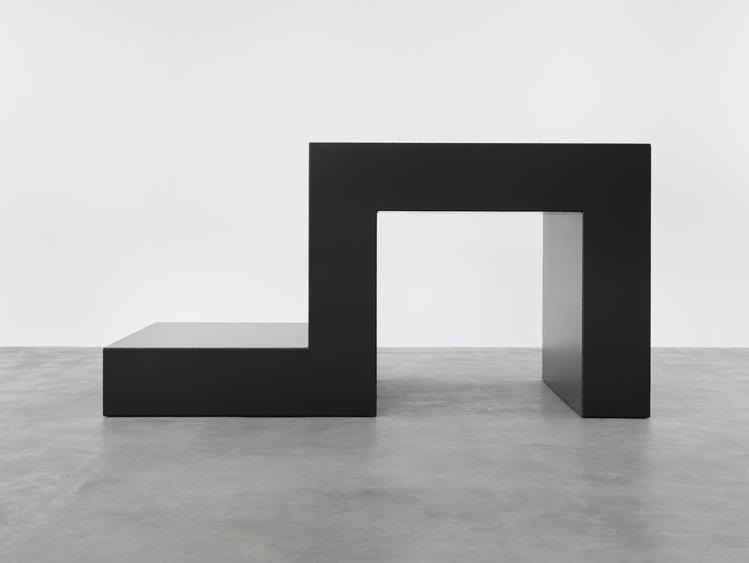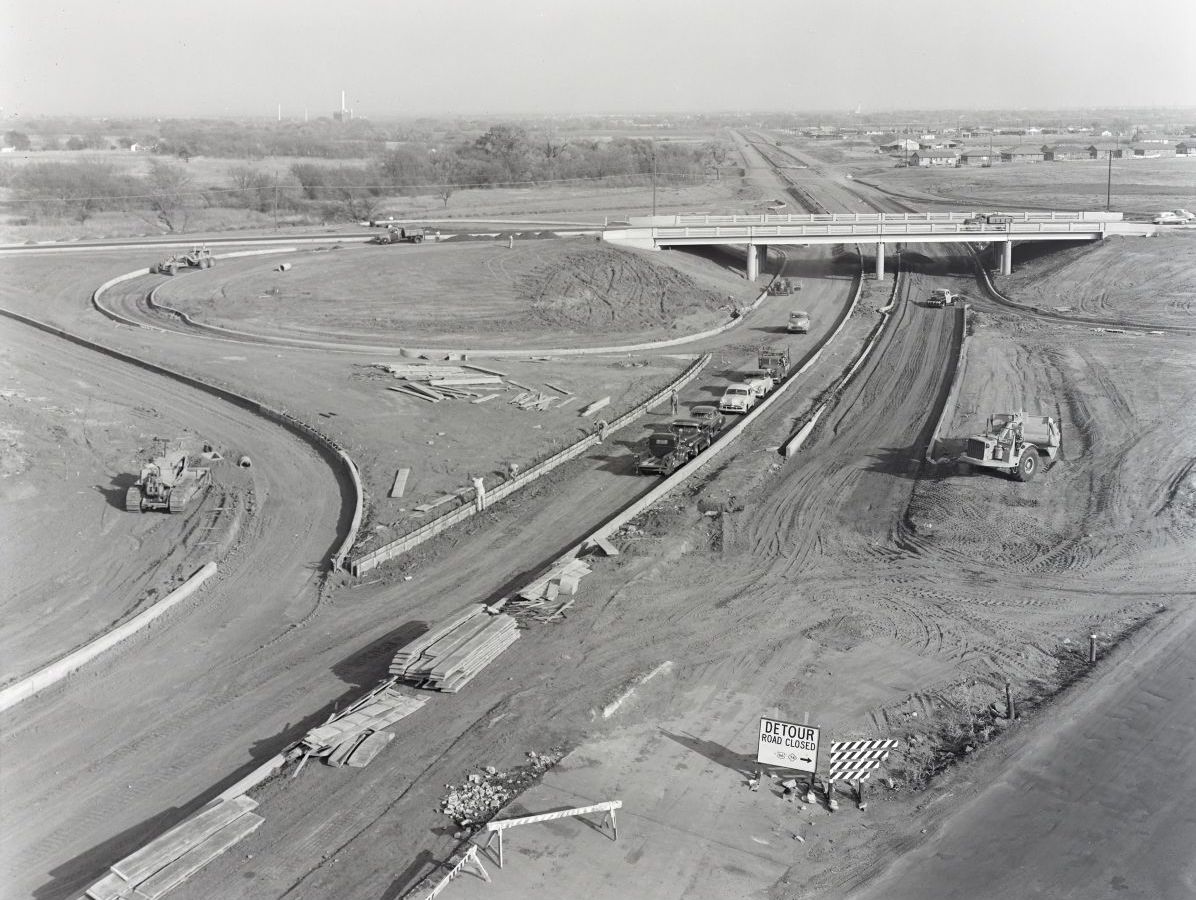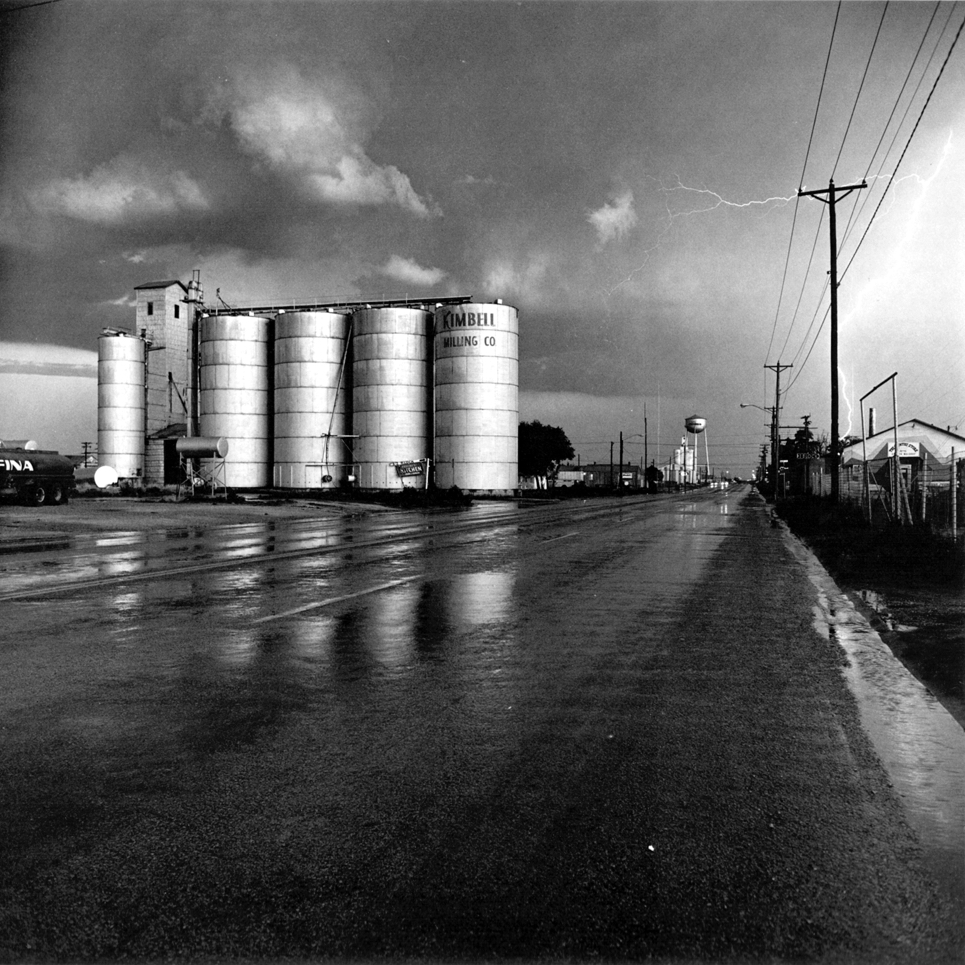thomas
deckker
architect
critical reflections
Two Renaissance Towns: Two Seasons
2024
2024
- Richelieu: Winter
- Sabionetta: Summer
- The Quincunx
- The Empty Space
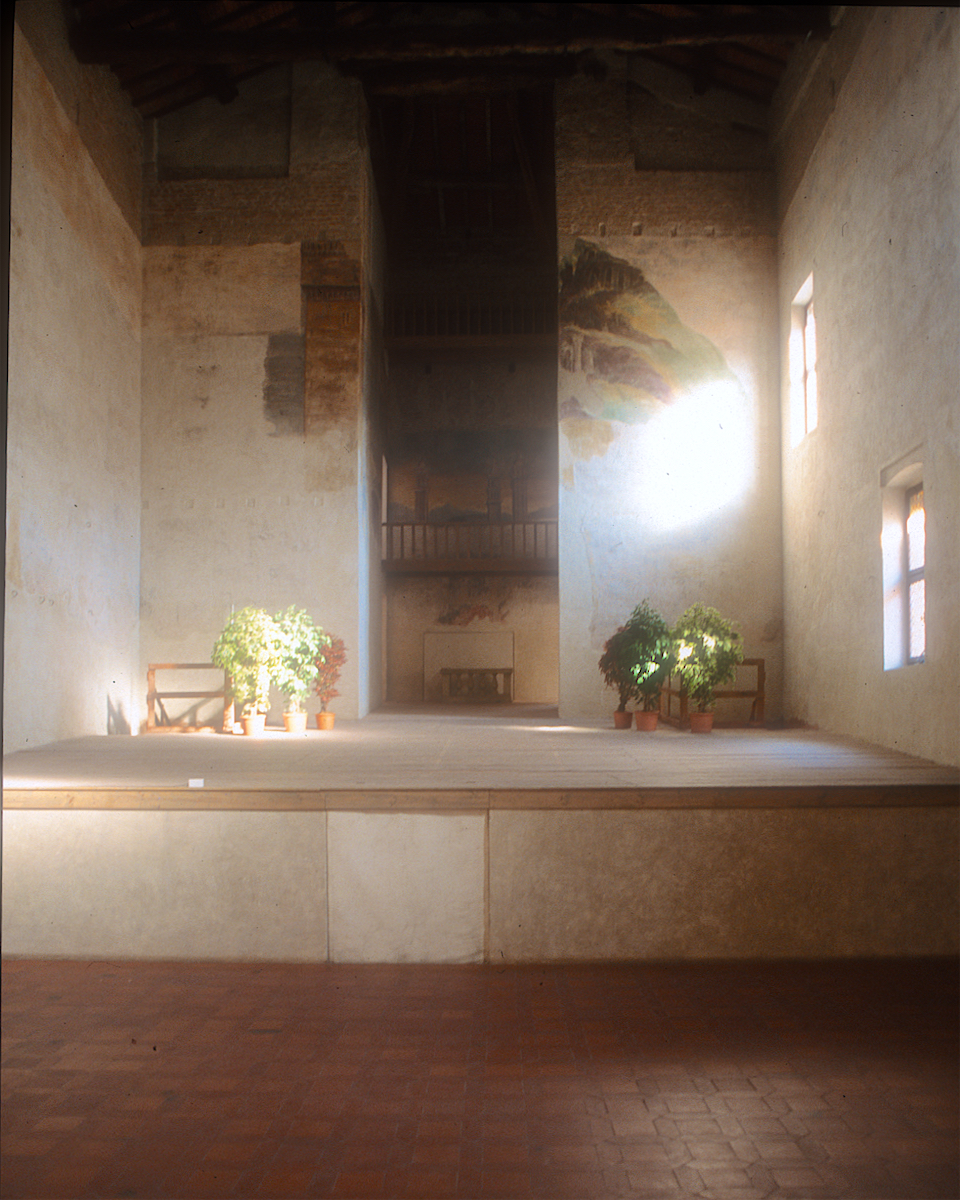
Vincenzo Scamozzi: Teatro all'Antica, Sabionetta (1588-90)
© Thomas Deckker 1995
© Thomas Deckker 1995
The empty stage, before the renovation of Scamozzi's backdrop of a street in artificial perspective shown in the sketch below.
The Empty Space
To experience the empty space of the Teatro all'Antica in Sabionetta is to experience what Peter Brook called the 'empty space', and to realise how opera illuminated life for its renaissance audience.
I can take any empty space and call it a bare stage. A man walks across this empty space whilst someone else is watching him, and this is all that is needed for an act of theatre to be engaged. [1]

Andrea Palladio: Teatro Olimpico, Vicenza (1580)
© Thomas Deckker 1995
© Thomas Deckker 1995
The wide and shallow stage contained 5 streets in artificial perspective. All of these aspects diluted the stage presence of the performers.
Scamozzi had completed Palladio's Teatro Olimpico in Vicenza, left uncompleted on his death in 1580. The Teatro Olimpico was based on Roman theatres, but the wide shallow space was not particularly suitable for opera. Scamozzi designed the Teatro all'Antica in Sabionetta to be much longer than wide, with 'U' shaped tiers of seating and a single perspective view, a precursor of the horseshoe auditoria which proved to be the ideal form for opera. This change in form is attributable to the experience in design he gained in the court of Vincenzo Gonzaga, the Duke of Mantua. Mantua was a notable musical centre at the end of the 16th century. Vincenzo Gonzaga's private music room was believed lost, but Paola Besutti, Professor in Musicology at Sapienza Università di Roma, recently discovered it sealed off in a wing of the enormous Palazzo Ducale in Mantua. [2].
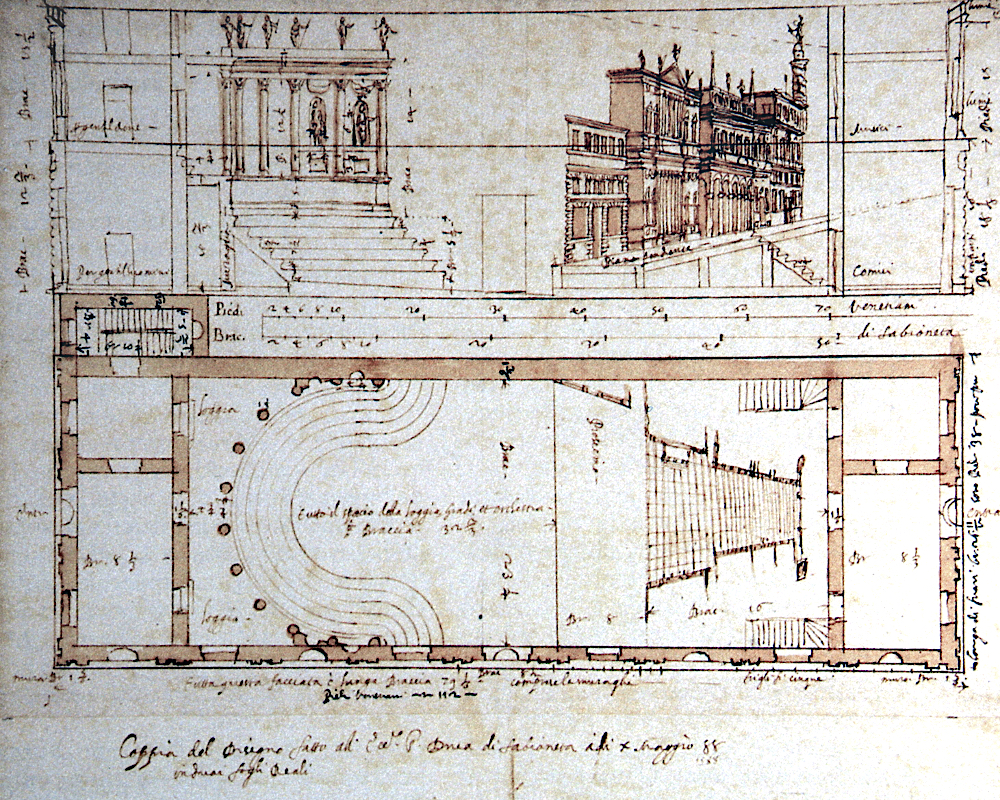
Vincenzo Scamozzi: Teatro all'Antica, Sabionetta (1588-90)
The development of opera occurred at the same time the development of the opera house. The importance of the architecture of the opera house has been ignored by musical historians, and vice versa with architectural historians, with the notable exception of Eugene J Johnson, Amos Lawrence Professor of Art, Emeritus at Williams College and author of Inventing the Opera House: Theater Architecture in Renaissance and Baroque Italy.[3] L'Orfeo by Claudio Monteverdi, the earliest surviving opera still performed, was written in 1607 and dedicated to Francesco Gonzaga, son of Vincenzo Gonzaga (L'Orfeo was not the first true opera: the Florentine composer Jacopo Peri had written Dafne (1598), now lost, and Euridice (1600), now regarded as a curiosity rather than a performable piece, for the marriage of Henry IV, King of France, and Marie de Medici).
Nicolas Poussin: Orphée et Eurydice (vers 1648)
INV 7307; MR 2331 Département des Peintures, Louvre
INV 7307; MR 2331 Département des Peintures, Louvre
The French artist Nicolas Poussin, who lived in Rome, illustrated the Greek myth of Orpheus and Eurydice in a slightly later painting. The myth of Orpheus and Eurydice was a frequent subject in renaissance art and music.
Footnotes
1. Peter Brook: The Empty Space (Atheneum, New York 1968)↩
2. Paola Besutti: ‘The 'Sala degli Specchi' Uncovered: Monteverdi, the Gonzagas and the Palazzo Ducale, Mantua’ in Early Music , Aug. 1999, Vol. 27, No. 3 (Oxford University Press)↩
3. Eugene J Johnson: Inventing the Opera House: Theater Architecture in Renaissance and Baroque Italy (Cambridge University Press 2018)↩
Thomas Deckker
London 2024
London 2024
